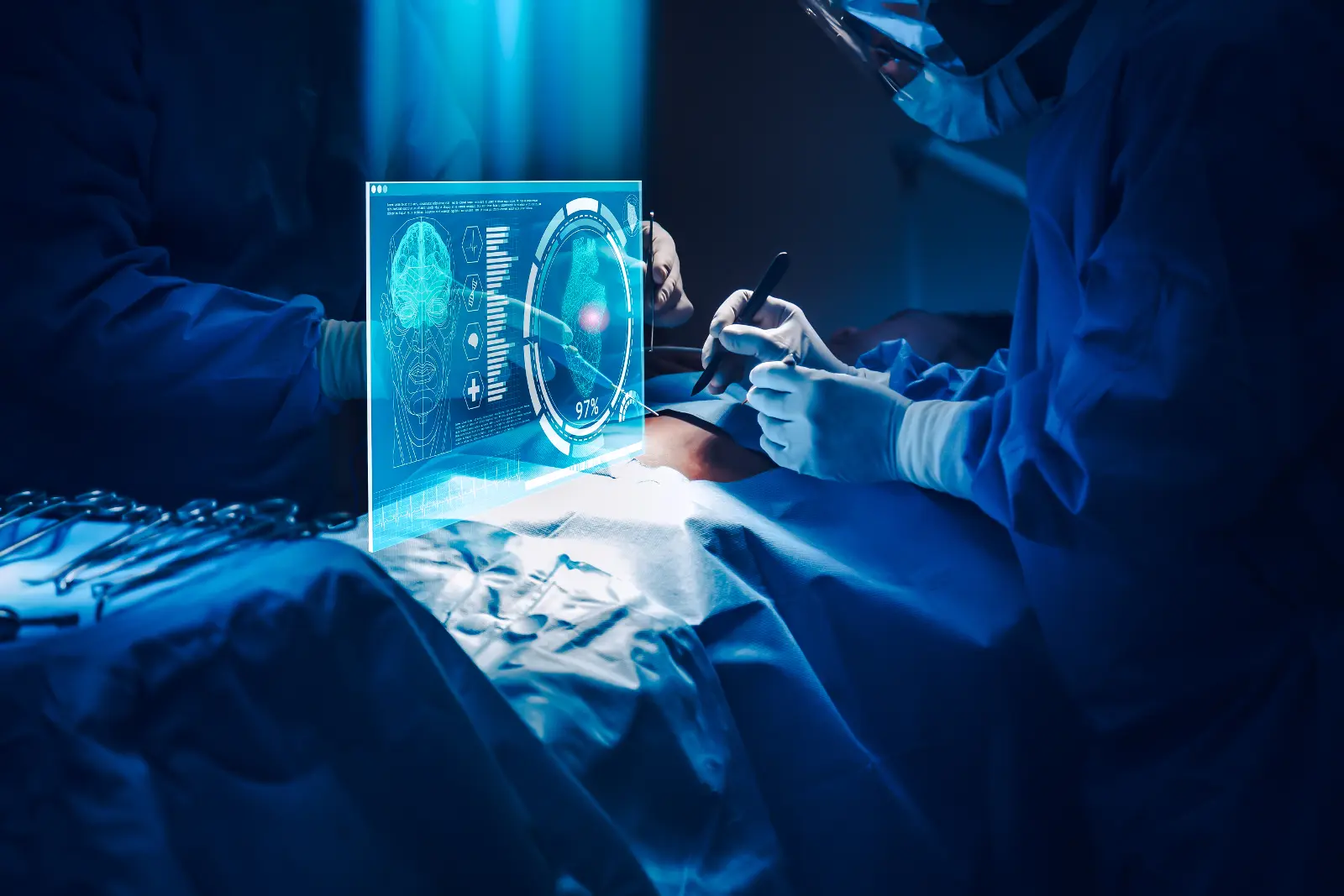Augmented Reality: The Future of Healthcare is Here

Healthcare is continuously evolving with advancements in technology. Augmented Reality (AR) is one such emerging technology that is poised to transform the healthcare industry and improve patient care. AR uses digital overlays on the real world to enhance one's current perception. With AR glasses and devices becoming available, the healthcare sector is exploring innovative ways to leverage this technology.
Diagnosis and Treatment
AR offers immense potential to improve diagnosis and guide medical procedures. Special AR glasses equipped with live imaging and sensor capabilities can provide doctors with vital patient information directly in their field of vision. AR visualization tools allow rendering medical scans like MRI, CT etc directly onto the patient. This enables doctors to see inside the body without any invasive procedures.
AR assisted visualization is being used for complex surgeries. AR overlays with pre-operative scans and references help surgeons navigate anatomical structures more accurately. AR navigation during orthopedic or neurosurgeries improves precision. Studies show AR guided procedures reduce operation time and risks of complications. Augmented Reality In Healthcare is also helping in non-invasive image guided therapies and interventions.
AR can bring patient models and simulations into the real clinical environment. Doctors will be able to interactively see pathology, proposed treatments, medical devices in context of patient anatomy. This enhances understanding, aids decision making and planning. Some AR/VR simulators even allow practicing surgeries virtually before performing on actual patients. This training improves skills and safety.
Medical Education
AR provides opportunities to revolutionize medical education and training. Life-size interactive 3D anatomical models overlaid in real environment via AR devices allows students to visualize complex biological systems and pathologies much better. Mixed reality human anatomy visualization brings learning to a whole new experiential level compared to textbooks.
AR simulated patients and clinical environments enable safe practice of procedures, examinations and interactions. Students can receive automated feedback to improve skills. AR educational tools have potential to make healthcare learning globally accessible by bringing high-quality simulative learning anywhere, anytime on mobile devices. This will address shortage of training opportunities and resources especially in developing regions.
Remote Healthcare and Collaboration
AR builds pathways for remote healthcare delivery via telemedicine. Specialized AR devices can enable remote physicians to visualize patient condition and guide on-site healthcare workers during examinations, diagnosis and treatments. AR teleconsultations minimize need for in-person visits, saving commute time and costs for patients in remote areas with limited access to healthcare facilities and specialists.
AR further empowers remote healthcare through real-time collaboration. Specialists can effectively join examinations virtually and provide inputs using AR interfaces. Shared AR visualizations facilitate discussions between multiple doctors. Together they can analyze, rule out differentials, reach consensus on management plan quickly. This collective expertise via AR enhances quality of care for complex cases beyond capability of a single practitioner.
Patient Engagement and Empowerment
AR promises to engage and empower patients. AR and VR apps that visualize medical procedures, expected outcomes of treatments or surgeries in an interactive way improves understanding. This leads to truly informed consent and adherence. AR guided exercises or rehabilitation therapies at home in between facility visits ensure continuity of care.
AR experiences in healthcare also aim to relieve anxiety, distraction and pain. Immersive VR therapies during medical procedures like dentistry, injections, wound dressing distract patient attention from discomfort. AR games and simulations within clinical environments can engage and calm pediatric patients. With further advancements, AR may turn tedious treatment schedules into enjoyable engaging experiences. This transforms patient experience and psychological well-being.
Pharmaceutical Applications
AR allows pharmaceutical companies to visualize medical information before eyes of healthcare professionals as well as patients. Shared AR experiences of new drug therapies, devices and biologics better explain mechanisms, demonstrate applications, and highlight benefits compared to conventional marketing.
AR assisted pharmaceutical detailing helps sales representatives share product knowledge virtually without traveling during pandemic. Furthermore, intelligent AR assistants can remind and guide patients regarding dosage, side-effects of medicines. This improves medication adherence especially chronic therapies managing conditions like diabetes, asthma etc. AR applications thus support entire pharmaceutical value-chain from R&D to sales to medication management.
Augmented reality is bringing about transformative shifts in healthcare by enhancing capabilities as well as accessibility. As AR devices mature further, we can expect this technology to massively optimize processes across diagnosis, treatment, education and pharmaceutical domains. AR will play a pivotal role in universalizing quality healthcare by connecting providers, students and patients worldwide. It is set to revolutionize patient outcomes while making healthcare systems more efficient and collaborative than ever before. The future of medicine is augmented.
Get More Insights On This Topic: Augmented Reality in Healthcare
- Art
- Causes
- Crafts
- Dance
- Drinks
- Film
- Fitness
- Food
- Jogos
- Gardening
- Health
- Início
- Literature
- Music
- Networking
- Outro
- Party
- Religion
- Shopping
- Sports
- Theater
- Wellness
- IT, Cloud, Software and Technology


